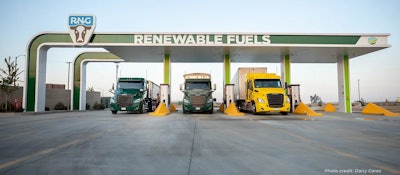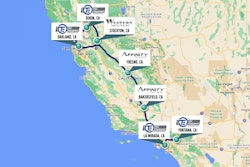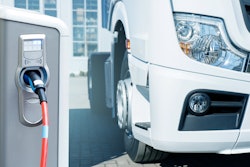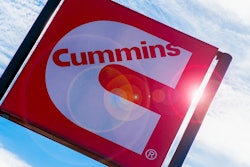
As a mechanic years ago I remember having to walk across the shop to borrow tools from my brother. That wasn’t always the case, but as a rookie I was far from having such an enviable collection.
Every visit to that giant Snap-On box made me feel like a kid in a candy store. And it wasn’t just the amount of tools; it was how clean and well-organized they were. Pat could quickly size up a job, know what tools he needed and then quickly get those tools to get the job done.
I also leaned on other mechanics for tools and advice because it wouldn’t have done me or the shop much good if I had just stayed in my stall and simply talked about my vision for car repair. I needed to work with the tools I had and then lean on others when necessary to get the job done.
A recent trip I took to Cummins’ headquarters in Indiana took me back to those days as an eager wrench wrangler and gave me a renewed appreciation for working with those master mechanics years ago.
From Cummins’ corporate office to their heritage center, their research and technology division and lastly to their mid-range engine plant, I was amazed by the talent, tools, knowledge and passion they bring to get the job done.
And at Cummins, they’re taking on a lot of jobs.
In addition to continually improving internal combustion, they’re pursuing all-electric and fuel cell powertrains along with hydrogen production and even wireless charging for trucks, all of which demonstrate a strong willingness to fully master various modes of propulsion as they push on to Destination Zero.
Destination Zero is the 40-year path Cummins envisions for fully transitioning from internal combustion to zero-emission powertrains like fuel cell and all-electric.
It’s a long journey where Cummins sees both conventional and renewable fuels playing an important part. Other industry players envision a similar future, which makes sense given the state of current powertrain technologies paired with the challenging demands of heavy-duty trucking.
The good part is if a diesel fleet wants to cut emissions now, they’ve got drop-in options that don’t require massive investments like all-electric and fuel cell. Fleets can turn to an engine manufacturing expert like Cummins and a biofuel guru like Chevron, Neste, Optimus Technologies and Shell to see what their best options are.
Renewable diesel and biodiesel offer improved cetane values and emissions reductions right away. Optimus Technologies enables fleets to run on B100 biodiesel, which offers even greater improvements at the tailpipe.
 Clear as water, Neste reports that its renewable diesel emits up to 75% less GHG emissions versus conventional diesel.Neste
Clear as water, Neste reports that its renewable diesel emits up to 75% less GHG emissions versus conventional diesel.Neste
“RNG’s use as a transportation fuel increased 234% over the past five years and offset 3.8 million tons of CO2e in 2021 alone,” Johannes Escudero, founder and CEO of the Coalition for Renewable Natural Gas, told CCJ.
Renewable diesel use is also growing.
To help meet increased demand, Oregon-based NEXT Renewable Fuels partnered with Shell and BP to build the world’s largest renewable diesel refinery plant just outside of Portland. Once completed, plant production is expected to reach 700 million gallons of renewable diesel annually. An ongoing supply of wood waste in Oregon will be among the renewable materials used to create the fuel at the plant, said Keith Wilson, CEO of Titan Freight, a plant proponent and renewable diesel user in Portland.
With the popularity and the production of renewables growing, it’s disappointing to see Mission Possible Partnership’s latest report diminishing the role of biofuels, which they contend are “expected to play a very limited role in truck decarbonization” given what they say is excessive cost and inadequate feedstock availability. Mission Possible is instead cheering for a fast track to all-electric and fuel cell trucks. Better not tell all these major industry players, like Shell, who have been betting big on renewables:
“LCF play a vital role in trucking, aviation and shipping,” reads Shell’s statement on its Low Carbon Fuels webpage. “This is because liquid LCF provide a lot of energy for a given amount of fuel. Electricity and hydrogen offer solutions over shorter distances today, but the longer the journey, the more important LCF are.”
When it comes to availability, there has certainly been plenty of headlines concerning an ongoing lithium shortage, which has quadrupled the element’s price in the past year, cobalt mined by children in Africa, and power shortages in Texas where Tesla owners have been asked to charge up during off-peak hours. These are cars, mind you, not juice-hungry trucks that will require so much more of the grid.
And when more electric trucks and vans hit the road, grid failures brought on by storms, earthquakes and God knows what else become even more of a concern. We lost power for two weeks following Cat 5 Hurricane Michael in Panama City, Fla. We didn't see any EVs on the road during that time. Diesel and natural gas kept the trucks going.
In short, all-electric and fuel cell as a toolbox for trucking is a pretty humble sight at this point. It’s definitely got promise, particularly as infrastructure, cobalt substitution and solid-state battery development continues. Second-life use cases for batteries following the powertrain lifecycle and ultimately battery recycling are also improving.
Obviously, with roughly 50 hydrogen fueling stations in the U.S. being confined solely to California, there’s a lot of room for growth there. An awful lot.
In the meantime, internal combustion, especially when paired with renewable fuels, can further reduce emissions now for a challenging segment of transportation that’s going to take decades and historic investment to fully electrify.










